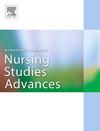Healthy aging in frail older adults: Active aging project of a national survey
IF 3.1
Q1 NURSING
International Journal of Nursing Studies Advances
Pub Date : 2025-01-27
DOI:10.1016/j.ijnsa.2025.100302
引用次数: 0
Abstract
Background
Frailty is a growing concern among the aging population. Due to their vulnerability and reduced physiological reserves, frail older adults face an increased risk of functional decline and loss of independence. In frail older adults, the concept of healthy aging emphasizes maintaining independence, functionality, and a high quality of life despite frailty and other age-related challenges.
Objective
Grounded in the multidimensional model of healthy aging and aging-related resilience theory, we aimed to propose and test a hypothesized model. The model included exogenous variables (cognitive and physical function, perceived health) and mediators (resilience, social support, and daily activity) as influencing factors of healthy aging among frail older adults.
Methods
The cross-sectional study was conducted in South Korea using a national survey of 505 frail older adults living in the community. The sample was representative across age groups, sex, and regional distributions. A structural equation modeling was employed to test a hypothesized model, examining both direct and indirect effects of influencing factors on healthy aging. Data were collected between October and December 2023 and analyzed using IBM SPSS 26.0 and AMOS 26.0.
Results
A total of 505 frail older adults with an average age of 74 participated in the study. The hypothesized model demonstrated a good fit with the data. The exogenous variables and mediators accounted for 43 % of the variance in healthy aging. Resilience, cognitive function, and perceived health had significant direct and indirect effects on healthy aging. Daily activity also had a significant direct effect on healthy aging. Social support, while not directly affecting healthy aging, exerted a significant indirect effect through daily activity. Similarly, physical function influenced healthy aging indirectly via daily activity. The model was tested after controlling for age, sex (ref=male), economic status, and years of education. Among these confounding variables, economic status was a significant influencing factor in healthy aging (β = 0.14, p = 0.016).
Conclusion
Cognitive and physical function, alongside resilience and social support as mediators, significantly associated with healthy aging in frail older adults through daily activity. Health promotion strategies could focus on resilience and social support to empower individuals and strengthen social connectedness, thereby supporting independence in daily life and healthy aging. Further, we need to explore diverse social and cultural activities associated with healthy aging in this population to expand the definition of active aging.
求助全文
约1分钟内获得全文
求助全文
来源期刊

International Journal of Nursing Studies Advances
Nursing-General Nursing
CiteScore
5.80
自引率
0.00%
发文量
45
审稿时长
81 days
 求助内容:
求助内容: 应助结果提醒方式:
应助结果提醒方式:


